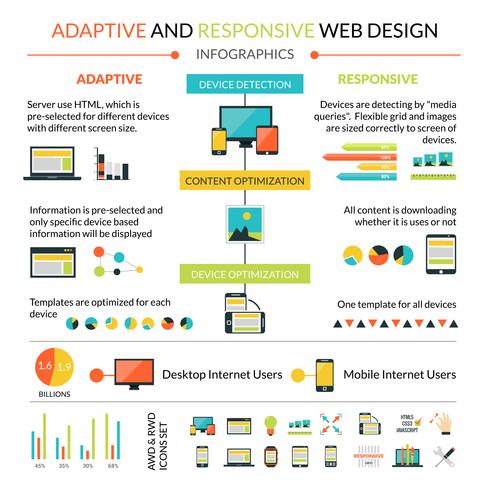Critical Site Layout Insights: Recommendations For Developing An Intuitive Interface
Critical Site Layout Insights: Recommendations For Developing An Intuitive Interface
Blog Article
Composed By-Abildtrup Skinner
When it concerns website layout, ensuring user-friendliness is essential. From responsive design to streamlined navigating, every element plays an essential duty in creating a website that satisfies your target market's requirements. Yet what regarding the better details that can make or break an individual's surfing experience? Stay tuned as basic web design reveal some often-overlooked tips that can boost your internet site's functionality to the next level, making it absolutely stand apart in the digital landscape.
Relevance of Responsive Style
Receptive design is a crucial element of modern-day site development. improve search engine optimization is responsive methods that it can adapt to various display dimensions and tools, giving a smooth experience for individuals.
With the increasing use mobile phones and tablets to access the internet, having a receptive style is vital for reaching a larger audience. simply click the up coming article assists in improving user experience by making your website easy to navigate and continue reading any kind of tool.
In addition, receptive style can favorably affect your internet search engine positions, as internet search engine like Google prioritize mobile-friendly web sites. By having a receptive design, you're also future-proofing your web site, as brand-new gadgets with varying screen dimensions continue to arise.
Simplify Navigating Framework
To boost individual experience and assist in easy accessibility to information on your web site, simplifying the navigation structure is critical. When creating your site, focus on producing a clear and user-friendly navigating menu that helps visitors discover what they're seeking promptly.
Limit the number of menu things to the basics, grouping associated pages together to prevent frustrating users. Usage descriptive labels that clearly indicate the material of each page, making it less complicated for users to understand where each link will certainly take them.
Take into consideration carrying out dropdown menus for subcategories to prevent cluttering the primary navigation bar. In addition, consist of a search bar prominently on the page for users that choose looking for specific details.
Prioritize mobile responsiveness in your navigating design to ensure simple gain access to on all tools.
Maximize Web Page Tons Speed
Improving web page load speed is essential for maintaining visitors on your site. Slow-loading pages annoy individuals and can lead to high bounce rates. To enhance web page lots speed, start by maximizing images. Press pictures without endangering quality to lower their documents sizes.
Furthermore, allow browser caching to keep often accessed sources locally, accelerating tons times for returning site visitors. Minify CSS, JavaScript, and HTML files by eliminating unnecessary characters, comments, and format, improving tons speed.
Take into consideration making use of a web content distribution network (CDN) to distribute your site's content across several servers worldwide, reducing latency for individuals accessing your website from various places. Finally, limit making use of third-party scripts and plugins, as they can dramatically affect lots times.
Final thought
In conclusion, by incorporating receptive layout, simplifying navigating, and optimizing web page load rate, you can produce an user-friendly site that interest a larger audience and improves individual experience. These essential elements ensure that visitors can easily access and browse your site across various gadgets, resulting in raised engagement and contentment. By focusing on these vital aspects, you can build a successful website that maintains users returning for more.
